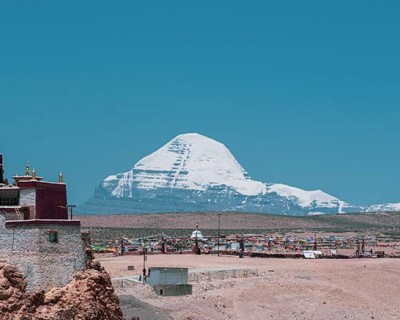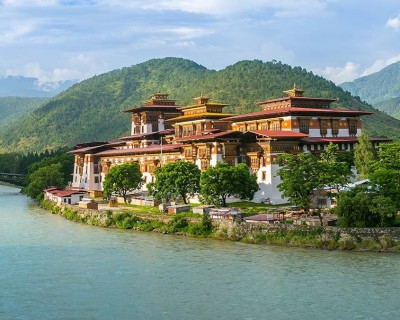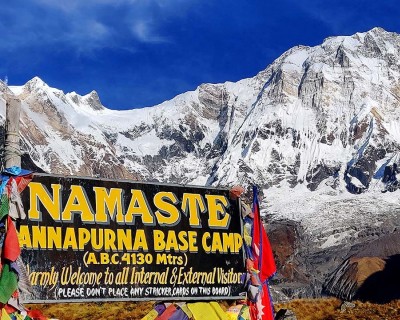Overview
The Gokyo Lakes trek is one of the most amazing ways to explore the beauty of the Everest region, entirely from a different perspective. It is not just a quieter trail in solitude to truly immerse in the beauty of the high Himalayas but also the best alternative to explore the unparalleled beauty of the Everest region from a different angle. The expedition in the valley with six sparkling pristine blue and green water lakes is most memorable during the peak seasons, spring and autumn.
Six sparking lakes, Gokyo Cho, Gyazumpa Cho, Thonak Cho, Ngojumba Cho, Kyajumba Cho, and Tanjung Cho, at an elevation of about 5,000 meters, brim with life during the peak seasons. The Gokyo Lakes are the highest freshwater lake system in the world and have great significance in Hindu and Buddhist cultures. Worshipped as the home of the ‘Naag Devata,’ hundreds of pilgrims take baths in these scared lakes during ‘Janai Purnima.’
Gokyo Lakes trek is one of the short and easy trekking alternatives in the Everest region; as there are fewer technical segments in the trek with a moderate route, it is the best way to explore the hidden gems at the foothills of the tallest mountain in the world.

Which Season is Best for Gokyo Lake Trek?
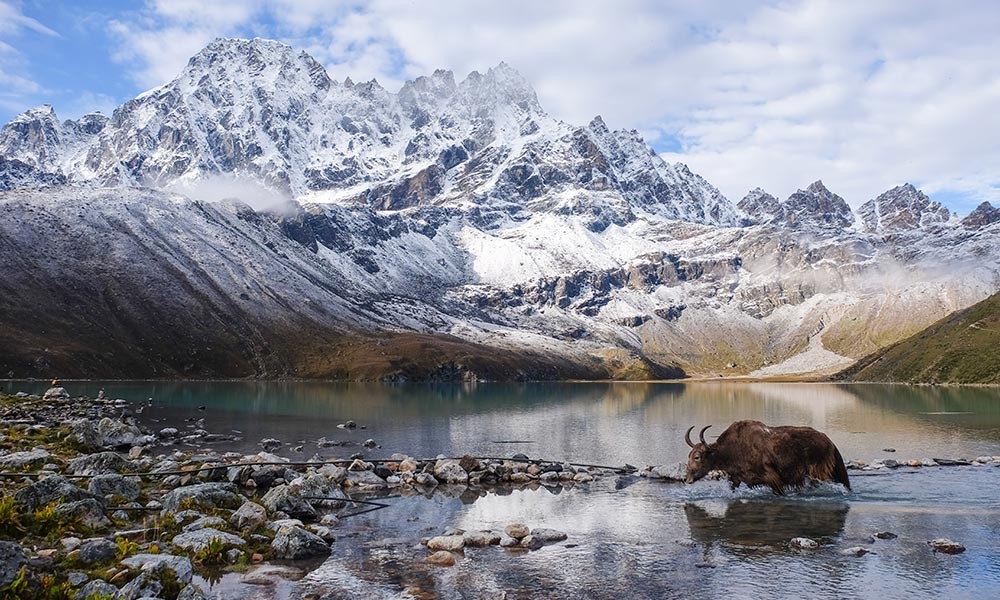 Although it is possible to trek in Nepal throughout the year in the Himalayan region, the best memorable and immersive experience can be attained during only the peak seasons. Nonetheless, the Gokyo Lake trek also rewards the trekkers with its own perks and remarkable beauty during other seasons- all year long. Here, we have listed the seasons best for the Gokyo Lakes trek with their pros and cons.
Although it is possible to trek in Nepal throughout the year in the Himalayan region, the best memorable and immersive experience can be attained during only the peak seasons. Nonetheless, the Gokyo Lake trek also rewards the trekkers with its own perks and remarkable beauty during other seasons- all year long. Here, we have listed the seasons best for the Gokyo Lakes trek with their pros and cons.
Gokyo Lake Trek in Spring Season (March to May)
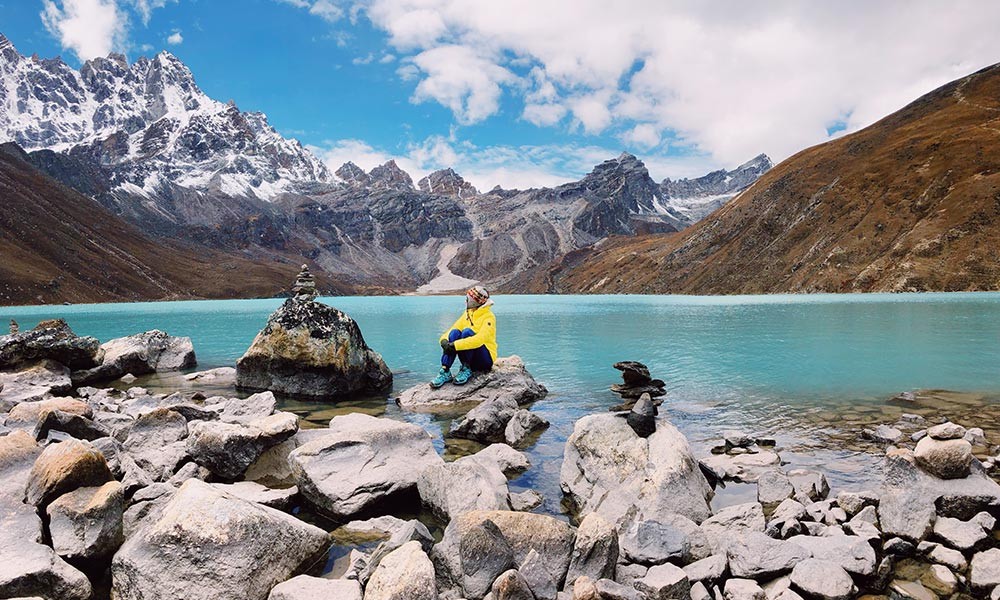 The true essence of this beautiful valley of lakes can be experienced during one of the peak seasons, spring. During the spring season, the days are long and bright, and the mild temperature with clear skies and stable weather make the trekking experience most enjoyable. The lush vegetation enroute, scented by the aroma of the beautiful rhododendron forest, and the Himalayan region at its prime, flourishing and nurturing life make the Gokyo Lake trek an unforgettable experience.
The true essence of this beautiful valley of lakes can be experienced during one of the peak seasons, spring. During the spring season, the days are long and bright, and the mild temperature with clear skies and stable weather make the trekking experience most enjoyable. The lush vegetation enroute, scented by the aroma of the beautiful rhododendron forest, and the Himalayan region at its prime, flourishing and nurturing life make the Gokyo Lake trek an unforgettable experience.
The temperature often fluctuates between 10°C to 15°C during the days and can drop upto -7°C to -5°C during the nights and early mornings.
Traversing from the grassy landscapes upto the moraines and the glacial landscapes at the foothills of the Himalayas, enjoying the rewarding views of several massifs in this peaceful uncharted trekking route, this expedition is something you don’t want to miss on your Spring exploration.
Gokyo Lake Trek in Autumn Season (mid-Septemeber to November)
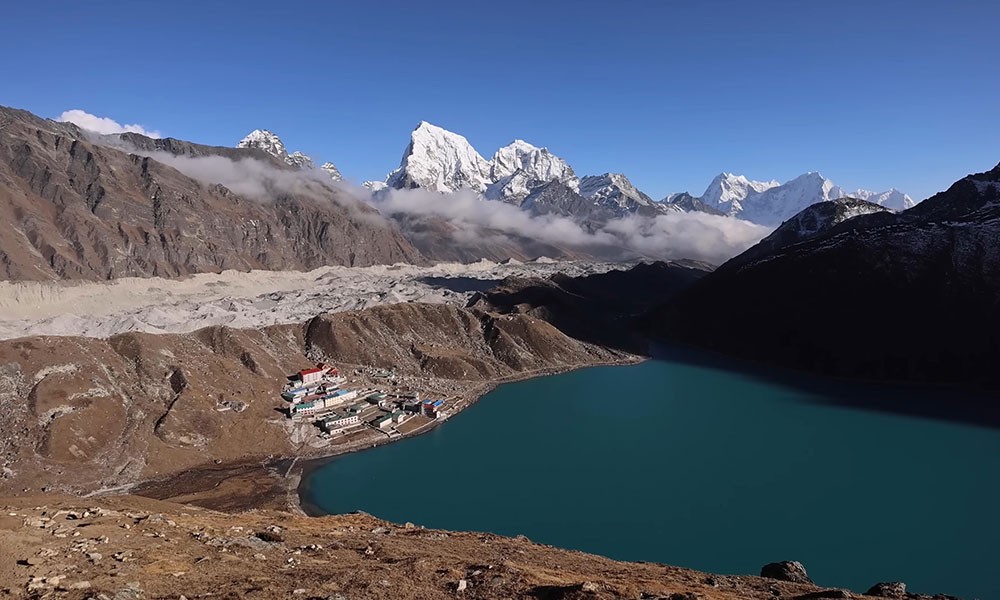 Another peak season for the exploration of the Gokyo Valley, autumn offers pleasant temperatures and clear views of the high-Himalayan region without any obstacles. Typically, it is the best season for the Gokyo Lakes trek for trekking enthusiasts who want immerse in the biggest festivals in this culturally and traditionally rich country.
Another peak season for the exploration of the Gokyo Valley, autumn offers pleasant temperatures and clear views of the high-Himalayan region without any obstacles. Typically, it is the best season for the Gokyo Lakes trek for trekking enthusiasts who want immerse in the biggest festivals in this culturally and traditionally rich country.
Three of the biggest festival in the Hindu community are celebrated in the Autumn season, Dashain (lasts up to 15 days), Tihar, also known as Deepawali (lasts 5 days), and Chhath (lasts 4 days). The average temperature during the days in the autumn season stays around 15°C to 7°C and can drop as low as 1°C to -13°C during nights and early mornings (weather starts to get colder towards the end of the November).
The cool breezy morning and evenings, followed by sunny and bright days, offer some of the most scenic and alluring views of the glorious mountain ranges in the Himalayas. That’s why this season is very popular among mountaineers who want to enjoy the unobstructed views and beauty of the high-Himalayan region.
Gokyo Lake Trek in Monsoon Season (June to August)
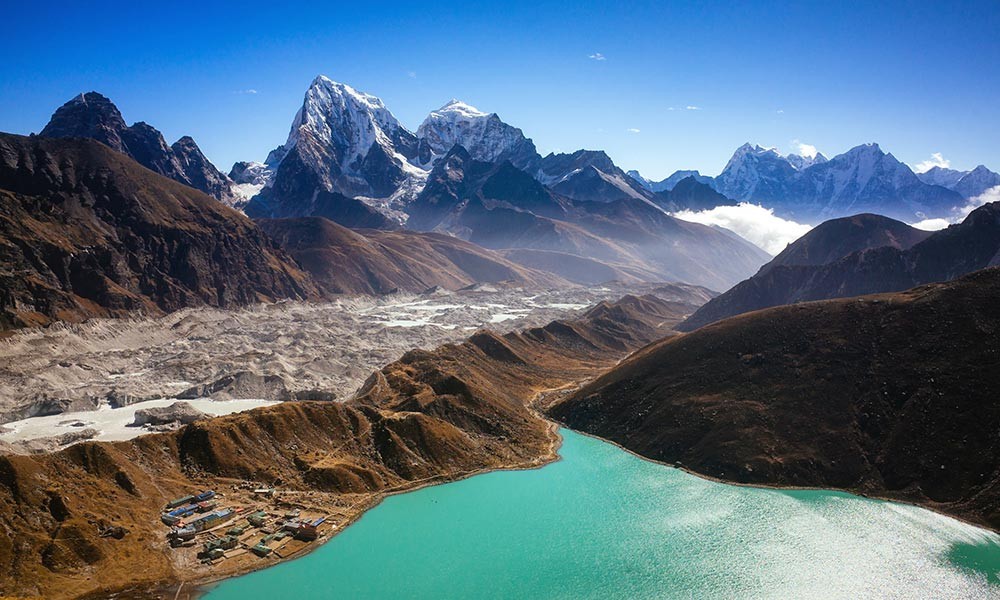
This trekking season in Nepal is notorious for the muddy trails, frequent rainfalls, landslides, and leeches problems at the lower elevation. Although it is not a peak season lined up with trekking enthusiasts along the way, the expedition to the Gokyo Valley along the less crowded route is still doable during monsoon.
During this season, the mountains are covered with fog due to heavy rainfall, and sometimes the never-ending back-to-back rainfall can even dampen the adventurous spirit. The weather is warmer during this soon, and the temperature fluctuates around 16°C to 22°C during the days, followed by -15°Cduring nights and early mornings.
Although it isn’t a perfect season for the exploration of the high-Himalayan region and doesn’t have stable weather, the Gokyo Lake trek, in this season, is still popular among trekkers who prefer relaxed and empty trails. With the right preparation and equipment, you could still set out on the exploration of the Gokyo Valley; the breathtaking views of the Himlayas, refreshed and nourished by the rainfall during the sunny days, make your trip worth it.
Also, the offseason discounts are some additional perks of the adventures during the monsoon season in Nepal.
Gokyo Lake Trek in Winter Season (late November to February)
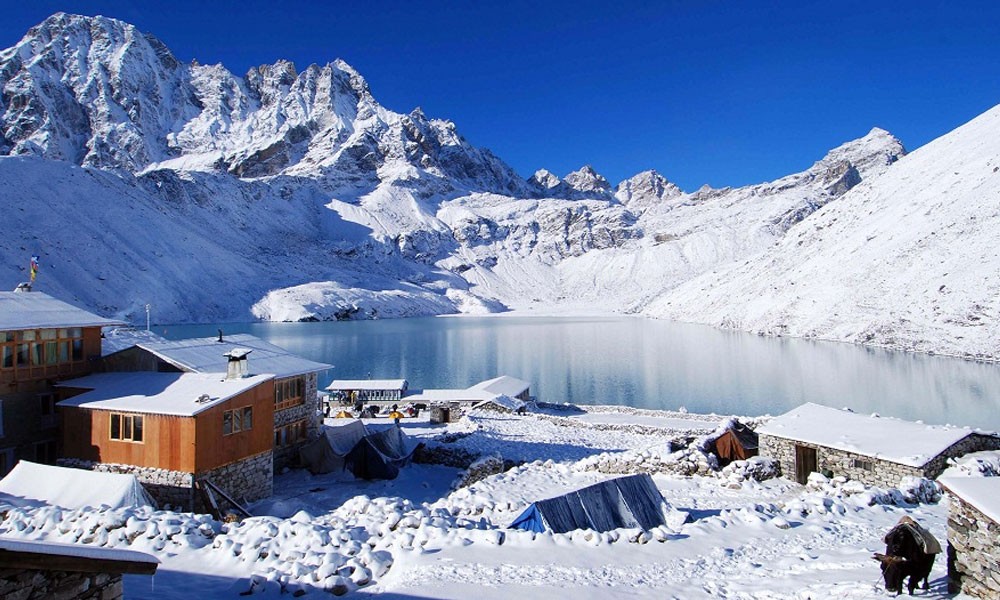 The wind starts getting chilly and freezing by later November in the Gokyo region, followed by light snowfalls. Especially during the peak winter months, December and January, the weather is extremely cold in the region, the trails will be entirely covered in snow. So, the heavy snow of the winter will not only obstruct the visibility and access of the expedition but also make it very difficult to move on a snow-covered path. Most of the time, the Himalayan region is covered in fog during winter; thus, trekkers won’t be able to truly soak in the beauty of the Himalayas as the most scenic parts of the adventure will constantly be covered by fog and clouds.
The wind starts getting chilly and freezing by later November in the Gokyo region, followed by light snowfalls. Especially during the peak winter months, December and January, the weather is extremely cold in the region, the trails will be entirely covered in snow. So, the heavy snow of the winter will not only obstruct the visibility and access of the expedition but also make it very difficult to move on a snow-covered path. Most of the time, the Himalayan region is covered in fog during winter; thus, trekkers won’t be able to truly soak in the beauty of the Himalayas as the most scenic parts of the adventure will constantly be covered by fog and clouds.
However, by late January, the fascinating scenic beauty of the Himalayan region will gradually become clearer.
During the coldest season in the region, the temperature hovers around -17°C to 20°C during the day and freezing during night and mornings, where the temperature can even drop from -1°C to -0°C.
The Gokyo Lakes trek is still possible during the winter season with adequate preparation; you need the proper equipment to move on the snow-covered trails and clothes accessories to deal with the temperature that drops below minus degrees Celsius during the night and early morning.
You may also like:


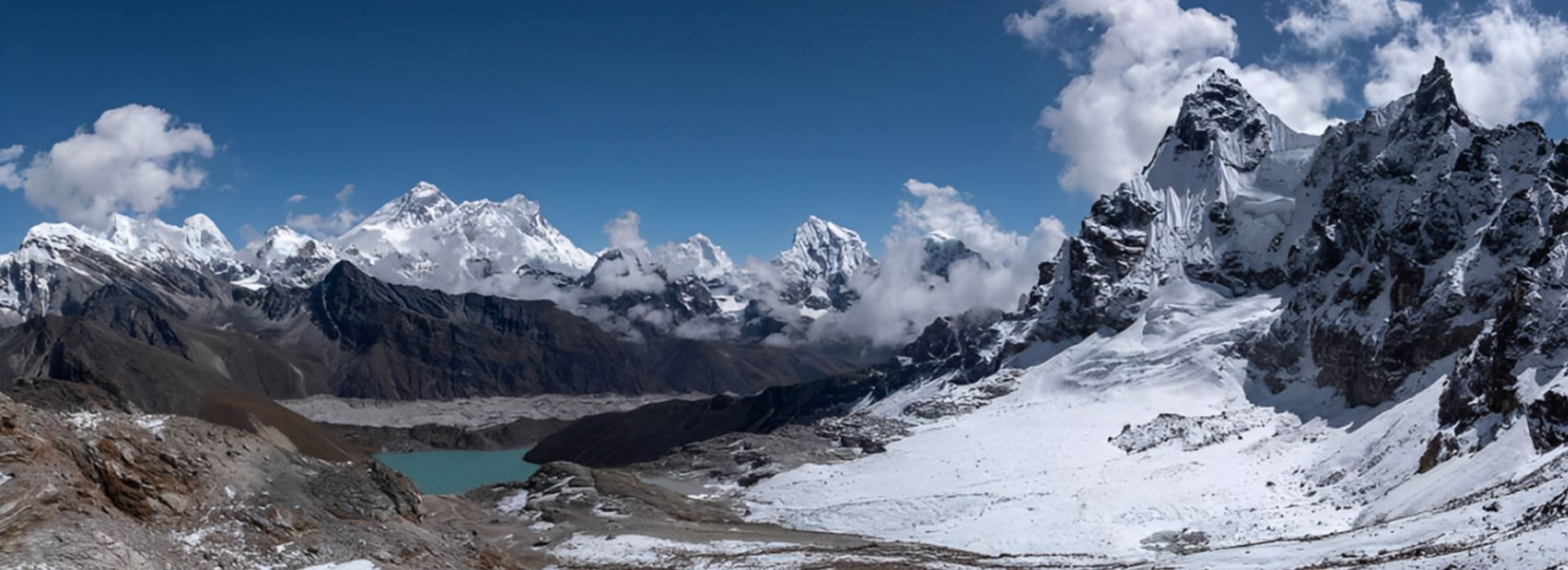

 Although it is possible to trek in Nepal throughout the year in the Himalayan region, the best memorable and immersive experience can be attained during only the peak seasons. Nonetheless, the Gokyo Lake trek also rewards the trekkers with its own perks and remarkable beauty during other seasons- all year long. Here, we have listed the seasons best for the Gokyo Lakes trek with their pros and cons.
Although it is possible to trek in Nepal throughout the year in the Himalayan region, the best memorable and immersive experience can be attained during only the peak seasons. Nonetheless, the Gokyo Lake trek also rewards the trekkers with its own perks and remarkable beauty during other seasons- all year long. Here, we have listed the seasons best for the Gokyo Lakes trek with their pros and cons. The true essence of this beautiful valley of lakes can be experienced during one of the peak seasons, spring. During the spring season, the days are long and bright, and the mild temperature with clear skies and stable weather make the trekking experience most enjoyable. The lush vegetation enroute, scented by the aroma of the beautiful rhododendron forest, and the Himalayan region at its prime, flourishing and nurturing life make the Gokyo Lake trek an unforgettable experience.
The true essence of this beautiful valley of lakes can be experienced during one of the peak seasons, spring. During the spring season, the days are long and bright, and the mild temperature with clear skies and stable weather make the trekking experience most enjoyable. The lush vegetation enroute, scented by the aroma of the beautiful rhododendron forest, and the Himalayan region at its prime, flourishing and nurturing life make the Gokyo Lake trek an unforgettable experience. Another peak season for the exploration of the Gokyo Valley, autumn offers pleasant temperatures and clear views of the high-Himalayan region without any obstacles. Typically, it is the best season for the Gokyo Lakes trek for trekking enthusiasts who want immerse in the biggest festivals in this culturally and traditionally rich country.
Another peak season for the exploration of the Gokyo Valley, autumn offers pleasant temperatures and clear views of the high-Himalayan region without any obstacles. Typically, it is the best season for the Gokyo Lakes trek for trekking enthusiasts who want immerse in the biggest festivals in this culturally and traditionally rich country.
 The wind starts getting chilly and freezing by later November in the Gokyo region, followed by light snowfalls. Especially during the peak winter months, December and January, the weather is extremely cold in the region, the trails will be entirely covered in snow. So, the heavy snow of the winter will not only obstruct the visibility and access of the expedition but also make it very
The wind starts getting chilly and freezing by later November in the Gokyo region, followed by light snowfalls. Especially during the peak winter months, December and January, the weather is extremely cold in the region, the trails will be entirely covered in snow. So, the heavy snow of the winter will not only obstruct the visibility and access of the expedition but also make it very 